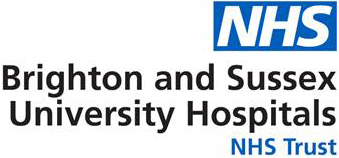The strategic reasons given in support of a proposed merger of two hospital trusts in Sussex have been described by NHS England and NHS Improvement (NHSEI) as both ‘clear’ and ‘strongly supported’. The supportive comments came in a letter to the chief executive of Western Sussex Hospitals NHS Foundation (WSHT) and Brighton and Sussex University Hospitals (BSUH) ahead of a key meeting of the boards of directors to decide whether a formal application to merge the two trusts on 1 April 2021 should proceed.
WSHT and BSUH have been working together for four years under a joint management contract that expires on 31 March 2021. During this time, BSUH has become the fastest improving acute hospital trust in England, emerging from special measures and earning a Care Quality Commission rating of Good overall and Outstanding for caring. WSHT meanwhile maintained its own Outstanding status and also became the first non-specialist acute trust to achieve Outstanding ratings in all key inspection areas.
The boards propose to build upon these achievements and further improve hospital services for patients in Sussex by bringing the best of both trusts together and create a new, larger organisation called University Hospitals Sussex NHS Foundation Trust (UHSussex). The meeting, to be held virtually in public at 2pm on Thursday 18 March, can be observed by via Microsoft Teams
Chief executive Dame Marianne Griffiths DBE said: “The biggest global health crisis in a century has taught us many lessons this year but for health services none has been more important than the value of working together to keep patients safe and achieve the very best outcomes we possibly can.
“In Sussex, our collaborative approach had already delivered many benefits by the time Covid-19 engulfed us all, but it was the onset of the pandemic that strengthened our resolve to explore a merger. Our joint-response to the first wave demonstrated the improved benefits and resilience of acting as one, as well as the limitations of maintaining separation.
“In July 2020, when we formally took the decision to explore a merger, we opened the door to a future in which we can continue to deliver consistently excellent care for patients as well as provide fulfilling careers for our staff in a new organisation that would truly be better for everyone.”
The board meeting on 18 March marks the culmination of six months of planning as the trusts followed a rigorous process to assess the case for change. A strategic outline case was approved in September 2020 and it was in response to the submission of a full business case (FBC) that NHSEI wrote to the trusts on 9 March 2021 to provide a formal merger risk rating.
In each of the key areas NHSEI assesses, such as strategy, quality and finance, the proposed merger has received a rating of Green (strategy) and Amber/Green (quality, finance and transaction execution). These risk ratings provide the boards with further assurance that the merger plans are well thought through, safe and effective.
The full business case sets out a compelling case for change as well as a broad range of benefits that would advantage patients, staff and communities across Sussex. For patients, these include greater continuity of care and better access to services, as well as increased support for services under pressure due to national challenges, such as increasing demand, workforce availability and financial pressures.
University Hospitals Sussex would employ nearly 20,000 people across five main hospital sites in Sussex, with an operating budget of more than £1 billion. The FBC cites the proposed new trust’s size and breadth as a key factor that would help address challenges that both BSUH and WSHT have in common with the rest of the NHS following the pandemic.
Chief medical officer, Dr George Findlay, said: “We have made many improvements in recent years but it is getting harder to continue to improve our services in isolation. By working together, we can benefit from both greater scale and more opportunities to learn from each other and to do things differently. For example, we are developing an exciting five year clinical strategy to explore where we can make the best improvements for our patients and develop new services that ensure fewer people in Sussex have to travel elsewhere for high quality hospital care.
“It is important to recognise that our clinical strategy work also cements our commitment to continuing to invest in all the services we currently provide, including emergency, specialist, tertiary and trauma care. We are committed to developing our vibrant local hospitals and maintaining the services we know local people treasure, such as A&E and maternity care. By coming together as one trust, we will have the experience, expertise, funds and influence to safeguard and improve hospitals services in Sussex.”
University Hospitals Sussex would run seven hospitals in Chichester, Worthing, Shoreham, Haywards Health and Brighton and Hove, as well as numerous community and satellite services. The trust would be responsible for all district general acute services for Brighton and Hove, West and Mid Sussex and parts of East Sussex. It would also provide specialised and tertiary services across Sussex and parts of the South East, including neuroscience, arterial vascular surgery, neonatology, specialised paediatric, cardiac, cancer, renal, infectious diseases and HIV medicine services.
Dr Findlay added: “We wish to reassure our patients that we are taking a careful and considered approach and there will be no immediate changes to any of our clinical services as a result of the merger. The driving force behind our plans is our ambition to continually improve the care we provide and we look forward to involving our patients and the communities we serve in future developments.”
The board of directors meeting on 18 March is followed by a meeting of the WSHT Council of Governors who must also give their support, along with the Secretary of State for Health and Social Care, before a statutory application to merge the two trusts can be made to NHSEI.

